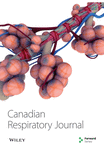Difficult Asthma: Consider All of the Possibilities
Abstract
Asthma is a common respiratory disease that can often be managed successfully. However, there are patients that do not respond to the maximum doses of standard therapy and subsequently have a reduced quality of life. Many factors can contribute to a failure to respond to treatment, and a comprehensive approach is important when assessing and evaluating these patients. This report describes a patient referred for ′difficult to control asthma′ who had multiple emergency department visits and hospitalizations. In addition to a history of wheezing, spirometry showed impaired flow and vital capacity was reduced. Further investigation showed a normal total lung capacity, and a computed tomography scan revealed main bronchus blockage by a tumour, which was confirmed by bronchoscopy. This led to a surgical resection of a mucoepidermoid carcinoma. This case highlights the need to consider all possibilities during the evaluation of patients with difficult asthma.




